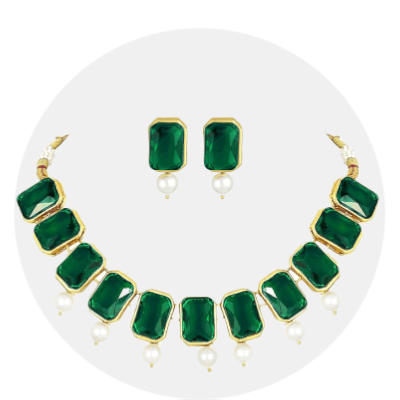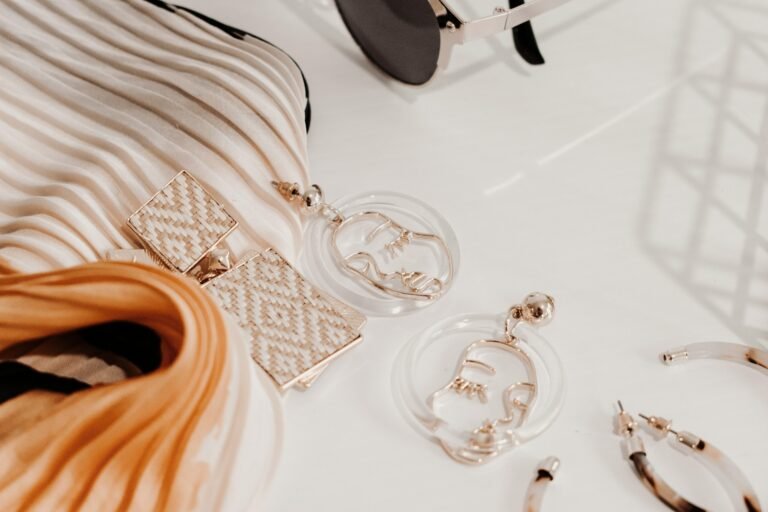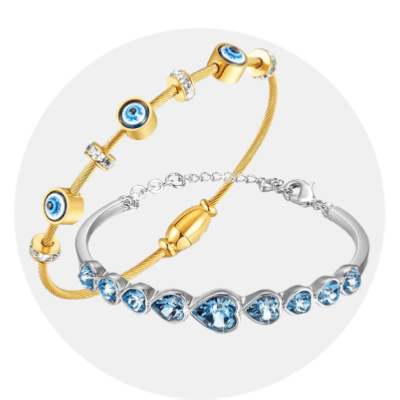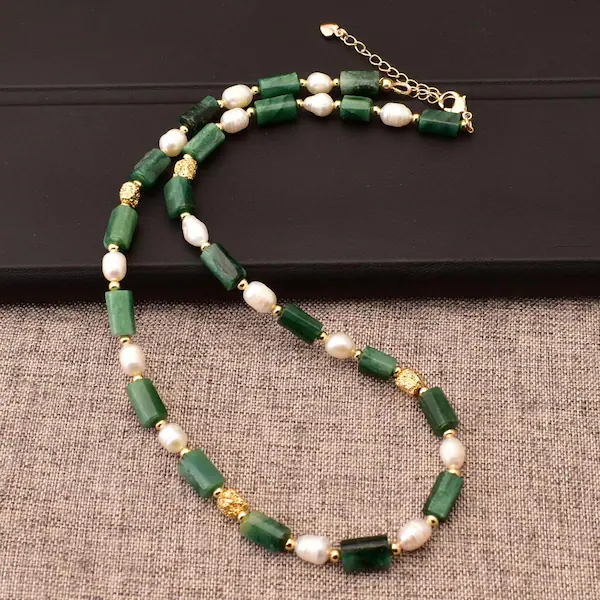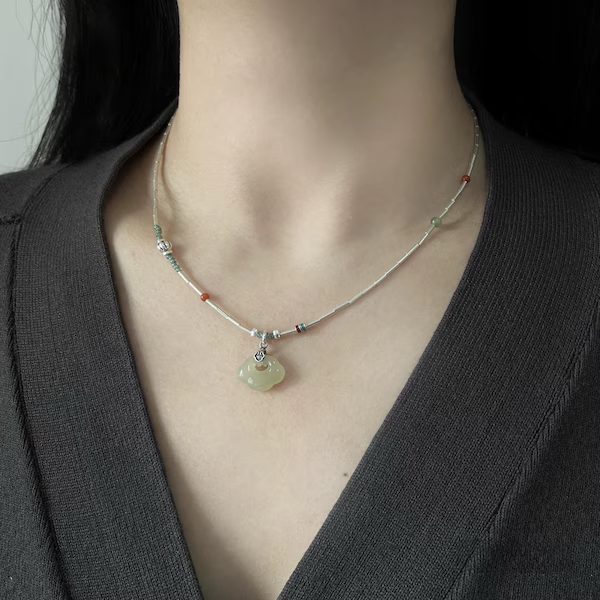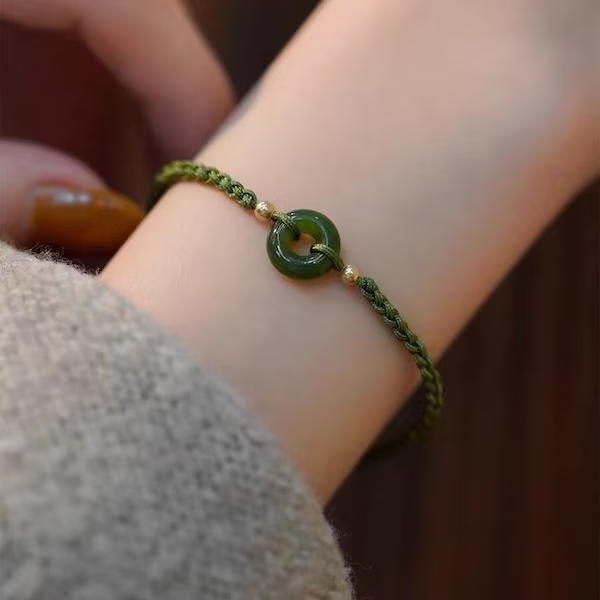Product categories
Jadeite vs Nephrite
A Complete Guide to Authentic Jade
When most people hear the word “jade,” they often think of one gemstone. In reality, jade refers to two distinct minerals: jadeite and nephrite. Both are considered real jade, but they differ in composition, color, rarity, and value. At Real Jade, we believe every buyer should understand these differences to make informed choices when investing in jade jewelry or carvings.
What is Jadeite ?
Jadeite is the rarer and more valuable type of jade. It is composed of sodium and aluminum-rich pyroxene and is renowned for its brilliant colors and translucency.
Key characteristics of jadeite (Real Jade insights):
Color: Ranges from vivid emerald green (known as Imperial Jade) to lavender, red, yellow, white, and even black.
Transparency: Can be translucent, allowing light to pass through, which increases its desirability.
Hardness: 6.5–7 on the Mohs scale, making it slightly harder than nephrite.
Value: Due to its rarity and beauty, jadeite commands higher prices, especially in fine jewelry markets.
Origin: Found mainly in Myanmar (Burma), which produces the world’s finest jadeite.
At Real Jade, we emphasize jadeite’s exclusivity—it is the jade of emperors and collectors, often passed down as heirlooms.
What is Nephrite?
Nephrite is the more common form of jade, but it has been treasured for thousands of years, especially in Chinese culture. Composed of calcium and magnesium-rich amphibole, nephrite is extremely tough and durable, making it ideal for carvings and ceremonial objects.
Key characteristics of nephrite (Real Jade insights):
Color: Found mostly in green, creamy white, and gray shades with fewer variations than jadeite.
Durability: Exceptionally tough, resistant to breaking, and perfect for carvings.
Transparency: Usually opaque, though some fine specimens can appear slightly translucent.
Hardness: 6–6.5 on the Mohs scale.
Origin: Mined in China, Russia, Canada, New Zealand, and the USA.
Nephrite is often called the “stone of the people” because of its abundance and use in cultural traditions, jewelry, and carvings.
Jadeite vs Nephrite: The Real Jade Comparison
At Real Jade, we highlight these distinctions so you can clearly understand what you’re buying:
| Feature | Jadeite | Nephrite |
|---|---|---|
| Mineral Type | Sodium-Aluminum Pyroxene | Calcium-Magnesium Amphibole |
| Hardness | 6.5–7 | 6–6.5 |
| Transparency | Semi-transparent to translucent | Mostly opaque |
| Color Variety | Wide range (green, lavender, red, etc.) | Mostly green, creamy white, gray |
| Rarity | Rare and more valuable | Common and less expensive |
| Cultural Use | High-end jewelry, luxury items | Carvings, traditional ornaments |
Why Jadeite is Pricier than Nephrite
From a Real Jade perspective, jadeite’s rarity, vibrant color, and translucency set it apart. Imperial green jadeite is among the most expensive gemstones in the world, often valued higher than diamonds.
Nephrite, while more common, is equally cherished for its strength and historical importance, making it a cultural treasure in its own right.
How to Tell if You Have Jadeite or Nephrite
At Real Jade, we recommend these tips:
Check the color: Bright, vivid, and varied colors often indicate jadeite; softer greens or creamy whites suggest nephrite.
Examine transparency: Jadeite allows light to pass through; nephrite is usually opaque.
Feel the texture: Jadeite feels dense and smooth, while nephrite has a softer luster.
Professional testing: A gemologist can confirm whether it is jadeite or nephrite using specialized tools.
Caring for Real Jade
Both jadeite and nephrite require careful handling to maintain their natural beauty.
Clean with a soft cloth and mild soap.
Avoid harsh chemicals or ultrasonic cleaners.
Store separately to prevent scratches.
Get professional care if your jade jewelry loses luster.
Final Thoughts by Real Jade
Whether you choose jadeite or nephrite, you are investing in real jade—a gemstone that carries beauty, durability, and cultural heritage. Jadeite is rarer, more colorful, and highly prized in fine jewelry, while nephrite is more common, durable, and historically significant.
At Real Jade, we encourage buyers to learn the differences so they can appreciate jade’s true value and authenticity. By understanding jadeite and nephrite, you ensure every purchase is an investment in both beauty and tradition.
Which is more valuable, jadeite or nephrite?
Jadeite is generally more valuable, especially Imperial Green jadeite, which can sell for millions. Nephrite is more affordable but still prized, especially in its pure white “mutton fat” form.


